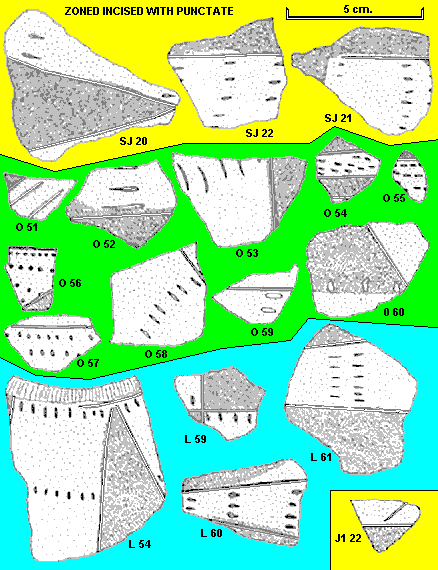
Go to REGIÓN SERRANA DE SARAGURO ...

These diagnostic zoned, incised body sherds are mostly painted red on buff with the incision separating the red from the buff. In addition, the buff sections usually have rows of punctate (for the most part done with fingernails). We have found this combination of red painted areas zoned by incision, with punctate in the other section, only along the lower course of the Río León (Putushio [O] and San José [SJ]) down to its junction with the Río Jubones (Jubones 1 [J1] and La Unión [L]). In other sites of the Jubones/León region (e.g. Rí León 2 [RL2], Sumaypamba [S] and Uchucay 1 [UC1]) we have found a few fragments characterized by red zoned incision or zoned punctate, but not the combination of both features.
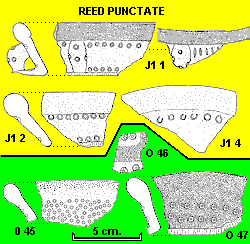 Reed punctate on the neck area of rim sherds with thickened, everted rims is concentrated only in the same general area as the red zoned incised with punctate sherds shown above. Not shown are similar sherds from SJ. None of this type were encountered at L, however.
Reed punctate on the neck area of rim sherds with thickened, everted rims is concentrated only in the same general area as the red zoned incised with punctate sherds shown above. Not shown are similar sherds from SJ. None of this type were encountered at L, however.
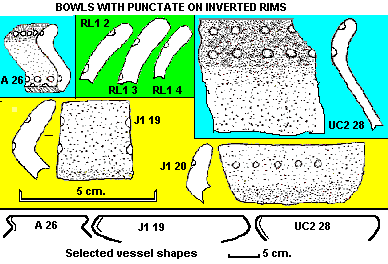 Bowls with round, solid (not reed) punctated, inverted rims are present in many of the sites in the León/Jubones region from Ayaloma (A) to Uchucay 2 (UC2). These include Jubones 1 (J1), La Union (L), Río León 1 (RL1), and Sumaypamba (S) (but not, so far as we have seen, at Putushio (O) or Uchucay 1 (UC1), for example). None of the pieces are large enough to provide assurance of vessel shapes; several possibilities are illustrated on the figure on the left.
Bowls with round, solid (not reed) punctated, inverted rims are present in many of the sites in the León/Jubones region from Ayaloma (A) to Uchucay 2 (UC2). These include Jubones 1 (J1), La Union (L), Río León 1 (RL1), and Sumaypamba (S) (but not, so far as we have seen, at Putushio (O) or Uchucay 1 (UC1), for example). None of the pieces are large enough to provide assurance of vessel shapes; several possibilities are illustrated on the figure on the left.
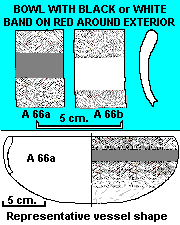 We have seen bowls with black or white bands on a red exterior only at Ayaloma (A) at the headwaters of the Río León. Bowls of similar form (with slightly inturned rim) but with other design elements (including streaky polishing, post-fired incision, and resist painting) are present principally in Ayaloma as well as Altar Mayor (AM) and Putushio (O).
We have seen bowls with black or white bands on a red exterior only at Ayaloma (A) at the headwaters of the Río León. Bowls of similar form (with slightly inturned rim) but with other design elements (including streaky polishing, post-fired incision, and resist painting) are present principally in Ayaloma as well as Altar Mayor (AM) and Putushio (O).
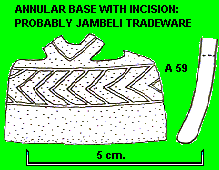 This sherd was encountered at Ayaloma (A), at the headwaters of the Río León, in the province of Azuay. With its incised design on an open-work annular base it is probably a trade sherd from the Jambeli culture, which was located at the mouth of the León/Jubones river system on the coast of Ecuador (see Estrada, Meggers and Evans 1964).
This sherd was encountered at Ayaloma (A), at the headwaters of the Río León, in the province of Azuay. With its incised design on an open-work annular base it is probably a trade sherd from the Jambeli culture, which was located at the mouth of the León/Jubones river system on the coast of Ecuador (see Estrada, Meggers and Evans 1964).